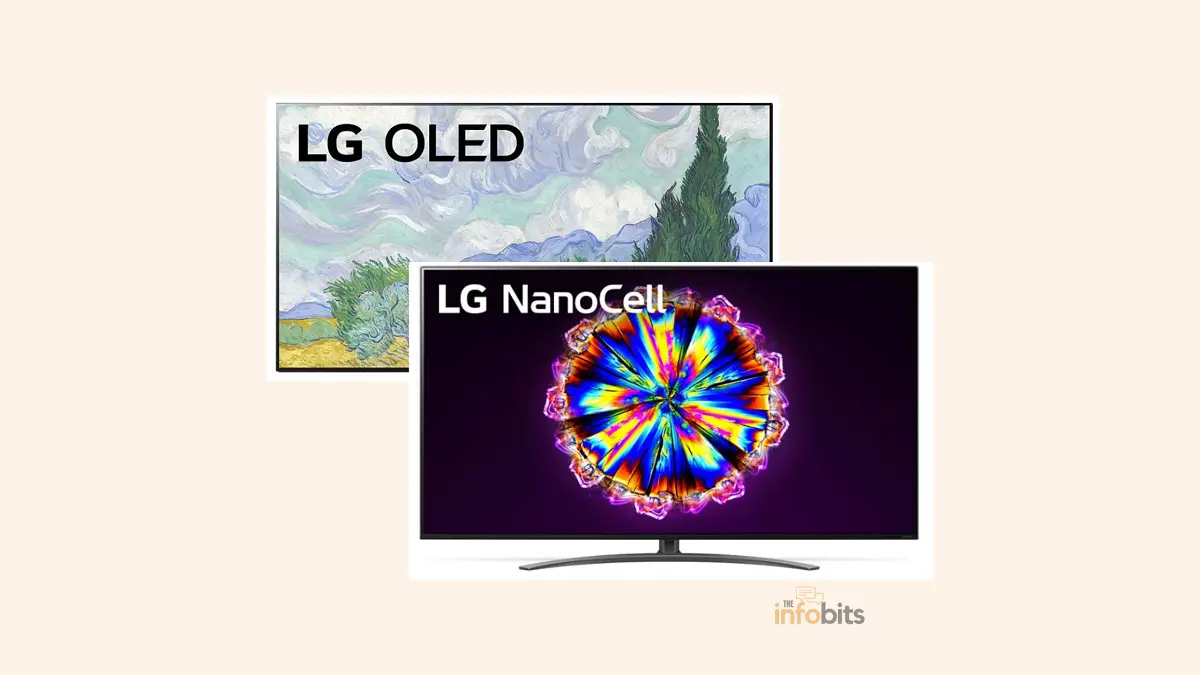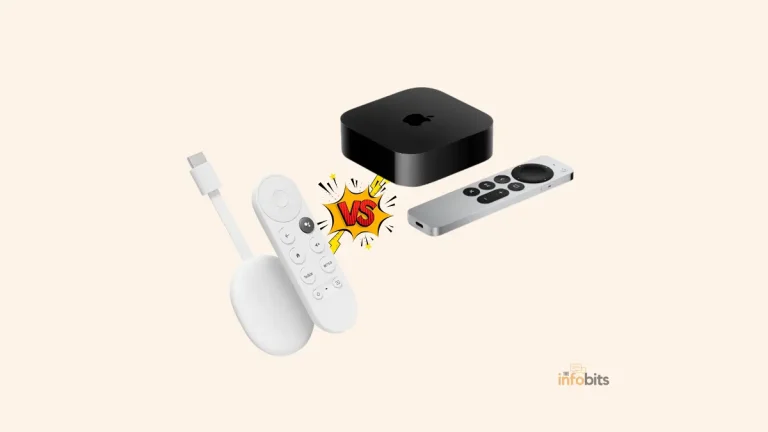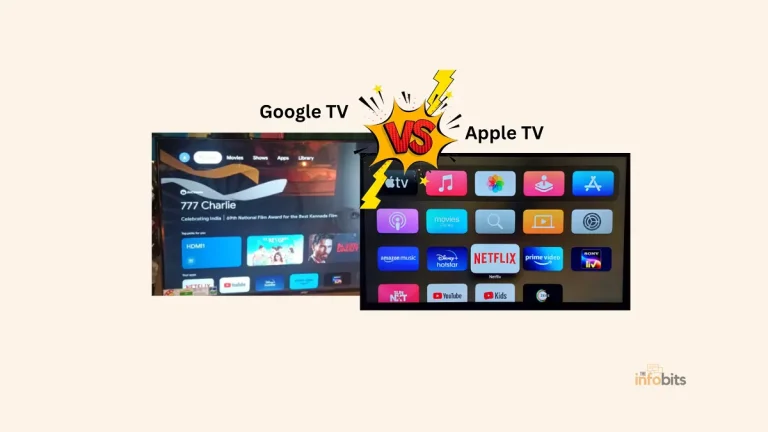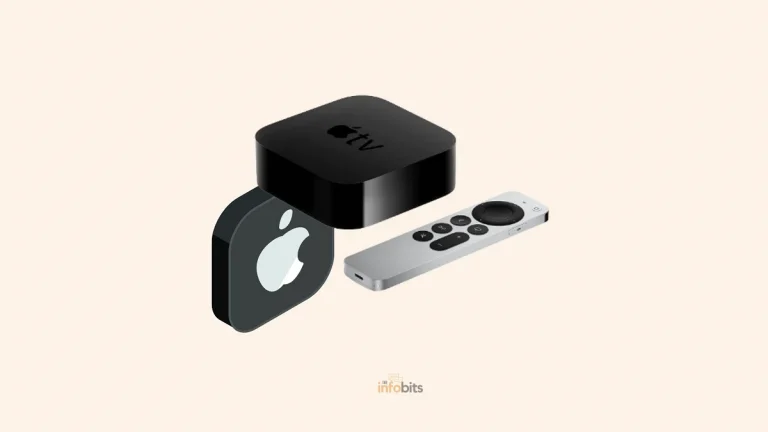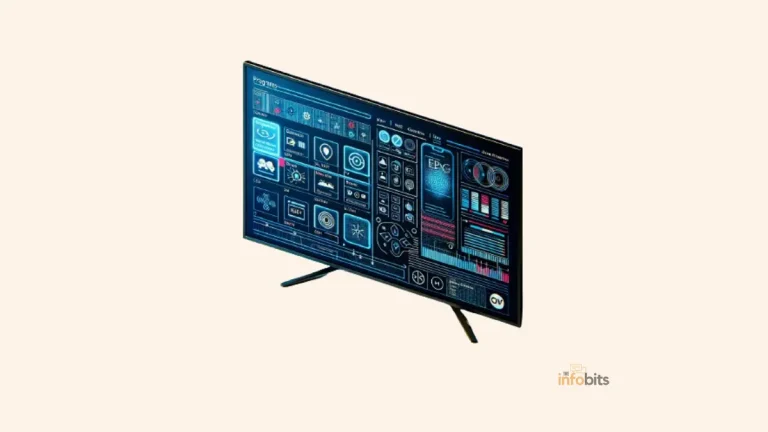NanoCell vs OLED: Which TV Technology Is Better?
You may have heard of the latest NanoCell and OLED TV display panel technology.
Every year, there is at least one new TV technology to learn about. Two of the most recent technologies in this category are OLED and LG NanoCell panels.
Let us make a comparison of NanoCell vs OLED.
These two separate types of TV display panels are commonly used in the most recent models of televisions. Understanding these technologies is critical in this context, especially if you are searching for a new television.
But, what exactly are OLED and NanoCell TVs? And how do they compare to one another?
In this article, we will go over the fundamental properties of OLED and NanoCell panels, as well as how they differ from one another.
To ensure that you fully grasp these new TV panel technologies, we’ll compare NanoCell and OLED panels and explain what they are, how they work, their benefits and drawbacks, and which is best for you.
What Is NanoCell?
NanoCell panels are similar to LED or LCD panels with regular backlighting and minor structural differences.
However, they vary from standard panels in that a nanoparticle layer has been added. The NanoCell display panel technology is used in a few of LG’s most current televisions.
We’ve already discussed what distinguishes NanoCell. LG NanoCell TVs are equivalent to traditional light-emitting diode (LED) and liquid crystal display (LCD) televisions. They have the same resolution as other 4K TVs.
However, the NanoCell differs in that it employs an extra layer of nanoparticles that acts as a color filter, increasing the brilliance and accuracy of the displayed colors.
How Does NanoCell Function?
Pixels of the primary colors red, green, and blue form a picture on a television screen. Combining these fundamental colors can result in millions or billions of possible colors.
External light may cause the colors on the TV screen to appear distorted. Color “bleeding” between neighboring pixels can also affect color fidelity.
When a pixel leaks off-color between two of these three colors, it is difficult to display the precise color intended. The image becomes less realistic and cannot display as many colors.
This indicates that the color of an adjacent pixel may impact the other pixel, resulting in an odd appearance on the screen.
By absorbing more light at unwanted wavelengths, nanoparticles limit color bleeding from RGB hues visible on the screen. The color filter on NanoCell TVs reduces “unwanted light wavelengths”.
In other words, it prevents unnecessary light from distorting the real color pixel. Displays with narrow bands can generate more realistic colors.
As a result, the NanoCell TV’s Red, Blue, and Green color pixels appear better. It also improves the sharpness of the screen’s whites and blacks.
Full-array local Dimming (FALD) is a feature found on some NanoCell TVs. This technique dims the TV’s backlight in dimly illuminated areas of the image, resulting in deeper blacks and shadows and a broader dynamic range.
In the current context, LG is attempting to combine the benefits of IPS with the capabilities of nanotechnology in its NanoCell TVs.
NanoCell LCDs have a wider viewing angle offered by IPS LCDs. At the same time, nanoparticles in the screen panel absorb unwanted light wavelengths, allowing for a larger range of colors.
What Is OLED?
OLEDs are Organic light-emitting diodes. A picture is displayed without the need for a backlight in this contemporary digital display technology.
Instead, each pixel is lit individually using single LEDs. One advantage is that “perfect black” may be created, allowing for completely dark display regions.
This is possible because each pixel may be controlled separately, and pixels in a certain region can be genuinely off when the matching picture area is dark.
Since each pixel is individually lighted, OLED TVs have a far larger dynamic range than traditional LEDs and NanoCell TVs.
OLED technology produces an extremely detailed picture. Because the colors are more bright and the dynamic range of the image is higher, an OLED TV may deliver a significantly more detailed picture than its competitors.
Both TV specialists and picture analysts praise OLED TVs for their high contrast, deep blacks, and wide dynamic range.
We now understand the fundamental operation and distinctions between NanoCell and OLED technologies.
Each innovation, like any other, has advantages and drawbacks. Let us go through the key advantages and disadvantages of NanoCell and OLED TVs.
Advantages of NanoCell TVs
The following are some of the primary benefits of purchasing a NanoCell TV.
NanoCell LED TVs outperform conventional LED TVs in terms of dynamic range and visual quality, with rich, genuine colors.
- NanoCell TVs may be viewed from a wide angle of up to 178 degrees. When compared to other commercially available LCD types, IPS technology improves viewing angles.
- When compared to standard LCD/LED TVs, the flawless color reproduction of a NanoCell TV delivers a crisp, highly detailed image.
- NanoCell TVs do not undergo “burn-in” when left on a static display for an extended period.
- NanoCell TVs, unlike traditional LCDs, do not fade.
- NanoCells are roughly half the price of an OLED TV in the midrange.
Disadvantages of NanoCell TV
There are various disadvantages to NanoCell TVs that you should be aware of before getting one.
- The blacks on NanoCell panels are not as deep as on OLED TVs.
- Because NanoCell TVs are still LCDs with a backlight, their color accuracy, and image quality are still inferior to that of OLEDs.
- OLED TVs consume less energy than NanoCell TVs.
Advantages of OLED TVs
Here are a few of the main reasons to buy an OLED TV.
- OLED TVs have far superior image quality than NanoCell TVs due to their very deep blacks and vibrant colors.
- The vast majority of OLED screens feature fast response times and low input latency. As a result, OLED TVs are ideal for gaming.
- OLED TVs offer incredibly wide viewing angles while retaining uniformity in brightness and color accuracy.
- Because they do not require a backlight, OLED TVs are smaller than standard LEDs and may be used in curved panels or rollable TVs.
- OLED TVs typically consume less energy because they do not require an always-on backlight.
- Because of their rapid reaction time, OLED panels outperform standard LED and LCD screens for fast-motion video (such as in sports or gaming).
Disadvantages of OLED TVs
You should keep in mind that OLED TVs have a few negatives in addition to their great qualities.
- ‘Burn-in’ is a potential issue with OLED televisions. However, this occurs only when a steady picture is exhibited on the screen for an extended period.
- OLED TVs can cost up to twice as much as NanoCell TVs with the same screen size. The price of an OLED TV is much greater than that of a comparable-sized LED TV.
NanoCell vs OLED: Which Is Better?
We’ve seen the benefits of NanoCell and OLED TVs. Can you decide which one is superior?
In-plane switching (IPS) panels and LCD panels, we learned, are utilized in LG’s NanoCell TVs. Inherently, these screens have a very wide viewing angle.
The NanoCell TVs also have a layer of nanoparticles that can filter out entering light wavelengths that might degrade the screen’s color and brightness.
The filter, which stops color from spreading to other sections of the screen, benefits reds, and greens the most.
In comparison to traditional LED panels, NanoCell TVs provide extremely realistic colors. As a result, LG’s NanoCell panel wins in the realistic image comparison between NanoCell and LED.
OLED TVs, on the other hand, are a whole different type of screen.
Because Organic Light-Emitting Diodes are self-illuminating, it is possible to have entirely black screen sections as well as very brilliant colors because each pixel is independently illuminated.
Since OLED panels do not require a backlight, they may be made in curved designs and at incredibly thin thicknesses.
In High Dynamic Range (HDR), OLED displays provide amazing image quality. Furthermore, it consumes less energy and has faster reaction times than its more traditional LED and LCD competitors.
Overall, OLED TVs outperform NanoCell Technology in the NanoCell vs OLED race, but you must invest more money to enjoy the benefits.
Difference Between NanoCell and OLED: At a Glance
| Features | Comparison |
| Picture Quality | The visual quality on OLED TVs is noticeably better. They offer immaculate blacks and an infinite contrast ratio. |
| Display Type | Transmissive displays are used in NanoCell. It employs standard LCD-LED backlit panels. However, OLED employs Emissive displays, which produce light from each LED pixel at varying intensities and colors depending on the image to be reproduced. |
| Brightness | It is difficult for OLED screens to achieve the high brightness levels required for excellent daytime viewing. NanoCell panels offer a much higher peak brightness than OLED panels. |
| Display Screen Thickness | The thickness of a NanoCell panel is around 35 mm, whereas the thickness of an OLED panel is 4 mm. |
| Burn-in | Burn-in occurs when a static image is shown on an OLED display for an extended period. To prevent burn-in, anti-burn-in features have been created for contemporary OLED TVs. Burn-in is not a concern with NanoCell TVs. |
| Viewing Angle | In comparison to NanoCell TVs, OLED TVs feature incredibly broad viewing angles while preserving brightness and color accuracy consistency. |
| Picture Dimming | When compared to deep black in OLED, NanoCell black zone pictures are somewhat greyish. |
| High Dynamic Range | In terms of HDR performance, there is just one winner: OLED. The color accuracy of OLED is significantly superior to that of NanoCell. |
| Response Time | OLED displays offer a faster response time (2 ms) than NanoCell displays. |
| Durability | When compared to NanoCell displays, OLED panels offer a somewhat lower level of durability. |
| Price | OLED TVs can cost up to twice as much as equivalent NanoCell TVs. |
Related: What Is the Difference Between a Monitor and a TV?
OLED vs NanoCell: Final Verdict
In our evaluation, we discovered that OLED regularly outperforms LG’s NanoCell TVs.
OLED boasts superior visual quality, superior gaming performance, lower power consumption, richer colors, deeper blacks, and brighter whites.
However, because the NanoCell does not have the same risk of burn-in as OLED, it is more suited for use in brighter surroundings, particularly with stationery visuals.
Furthermore, NanoCell TVs are significantly less expensive than OLED TVs.
In conclusion, OLED outshines NanoCell by providing superior image quality and game performance, reduced power consumption, deeper blacks, brighter whites, and stunning colors. NanoCell, on the other hand, is better suited for indoor use in brighter environments.
When shopping for a television, keep your needs, objectives, and budget in mind.
Frequently Asked Questions
Is LG NanoCell worth it?
LG NanoCell TV is a good option if you want an LED/LCD TV with an IPS screen. NanoCell TV provides enhanced images at an affordable price.
Which one is better QLED or NanoCell?
Both technologies have their own set of benefits and drawbacks. If you want high-quality images and don’t mind paying the extra, OLED TVs are a good option. However, if you want realistic images at a lower cost, NanoCell TV may be an option for you.
Is NanoCell better than 4K?
NanoCell is a display technology, and 4K is the resolution quality. You can watch 4K content on either a regular LED/LCD 4K (UHD TV) or a NanoCell 4K TV. However, you notice that the picture quality is superior on a NanoCell TV.
Is LG NanoCell good for the eyes?
Underwriters Laboratories (UL) has certified LG NanoCell TVs as having “No Photobiological LED Hazard,” assuring that hazardous light is not emitted.
Which is better NanoCell or UHD?
Because of its 4k resolution, NanoCell is a type of UHD television. NanoCell TVs provide a superior viewing experience than most other standard UHD televisions. The only exception is OLED, which performs the same functions as NanoCell but has a higher contrast ratio.
We hope you found this article helpful, and do Sign up for our free newsletter to receive fresh information right in your inbox In addition, we ask that you bookmark this page for future reference.

